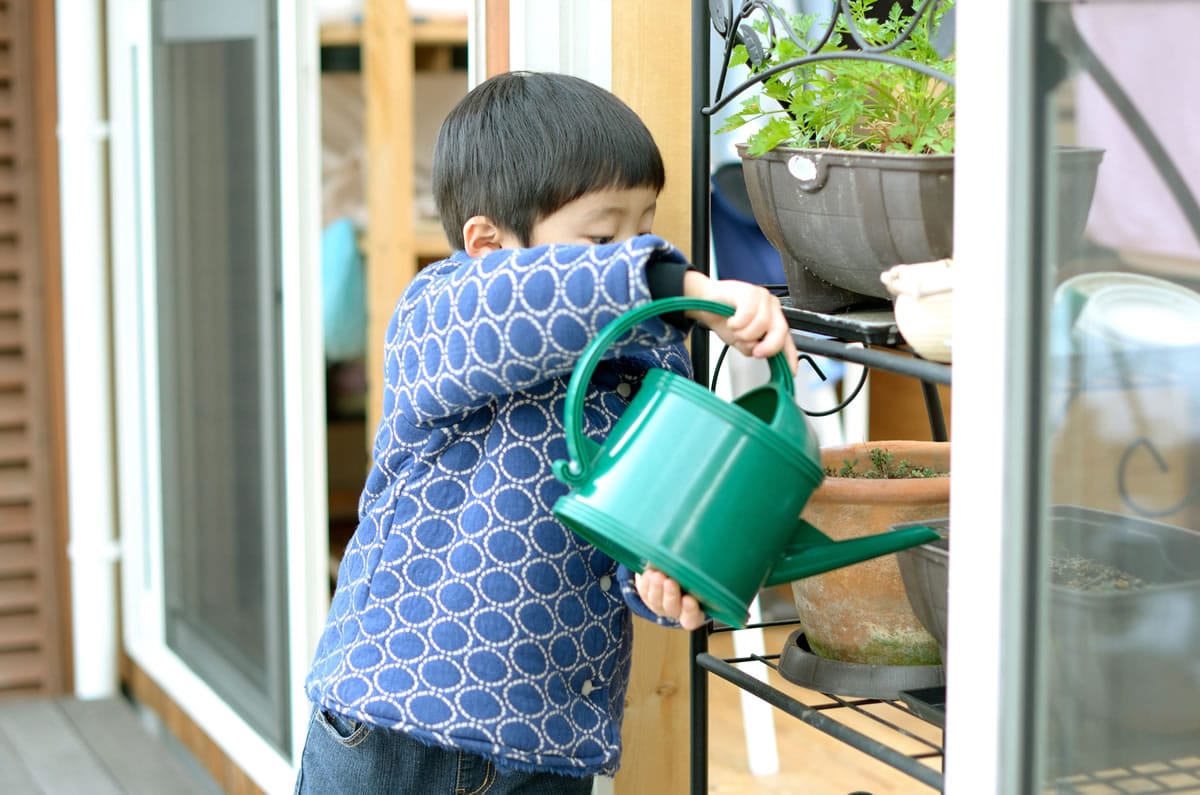Children seem to have an innate need to nurture living things. In summer, it’s easy to satisfy that need by dedicating a sunny corner of the yard to growing a tomato or carrot crop.
But growing plants indoors, whether due to inhospitable weather or lack of space, is another, often-overlooked option.
“Plants bring a house to life,” says Sharon Lovejoy, an author-illustrator who enjoys connecting children with nature. Lovejoy is the author of “Roots, Shoots, Buckets & Boots: Gardening Together With Children” and “Camp Granny.” “Having a green, growing thing to tend is a wonderful relationship for a child.”
Houseplants offer some advantages over garden beds. Living in close proximity to plants allows children to play an even greater role in their care, as well as to observe things that might go unnoticed in an outdoor setting, where interactions are more sporadic. Plants might be kept in a child’s room, too, as long as there’s sufficient light.
Caring for a houseplant teaches life lessons, says Randy Seagraves, curriculum director for the International Junior Master Gardener Program and extension program specialist with Texas A&M AgriLife Extension Service. Children learn how to consider the needs of another living things and the consequences if you don’t. Another possible plus for parents: Houseplants come without the responsibility of a pet.
“Growing something teaches kids the concept of delayed gratification,” Seagraves adds. “When you plant a seed or take care of a plant, you have to take care of it over a period of time.”
If the plant thrives, it could be around for years. If not, the consequences aren’t terribly serious, but they are tangible.
Kids can benefit at almost any age, taking on more responsibility as they mature. Preschool-age children can mist leaves with a sprayer or clean dusty plants with a sponge. Older children will be able to help more, removing dead leaves or repotting a plant that has outgrown its container. They can also create a calendar with notations for when it’s time for a weekly watering or monthly fertilizing.
When a plant fails to thrive, provide a magnifying glass, and kids can play detective, looking for clues to the root of the problem.
Now that you’re ready to get started, here are some plant selections for all types of children and situations:
Plants that multiply. “Kids often love the idea of sharing their plants,” says Kathryn Masuda, youth programs manager for the Atlanta Botanical Garden. “They can decorate a pot and give a new plant to someone else.” Spider or airplane plants (Chlorophytum comosum) are easy to grow and to propagate. Be on the lookout for shoots, called spiderettes, extending off the end of leaves. These little plantlets can be collected, replanted and given away. Succulents such as jade (Crassula ovata) or hen and chicks (Sempervivum) also thrive indoors and send shoots that can be potted and shared.
Hardy plants. Money tree (Pachira aquatica) is easy to grow and a good choice for kids who like to wield the watering can, says Justin Hancock, a horticulturist with Costa Farms, a wholesale producer of houseplants. In nature, it grows near streams, so it likes a good amount of water. Typically seen with braided stems, the money tree can also be found in bonsai versions that measure about 6 inches tall, Hancock says. If low light is an issue, pothos (Epipremnum aureum) is a viney plant that grows quickly, comes in a variety of colors and patterns and can make do with less sunshine.
Edible plants. Many herbs will grow indoors. A simple pot of chives or basil can be placed on a sunny windowsill and used to garnish a variety of dishes. For households with inadequate light and/or humidity for herbs to thrive, indoor garden systems (such as AeroGarden) can ensure success. A dwarf banana plant reaches heights of about 3 feet and produces fruit, though it is edible. Just note that it needs plentiful light to thrive.
Plants for experimentation. Lovejoy is a fan of what she calls “garbage gardens.” Try planting a seed to see if it grows. You might be surprised at the results, says Lovejoy, whose favorites have included grapefruit and lemons. Just be sure to keep the fledgling plants away from heating vents or drafty spots. “It’s not the ultimate success or failure that’s important,” she says. “It should be an adventure.”
Let kids choose their own. The aisles of garden centers and big-box stores are filled with plants that thrive indoors. For a small investment, allow your child to choose a variety that appeals, whether it’s a plant with shiny leaves or a fuzzy texture. Enlist help from staff as necessary to figure out what might work best in the conditions you can offer. Just be sure to avoid toxic varieties and sharp or prickly plants if the child is young.



